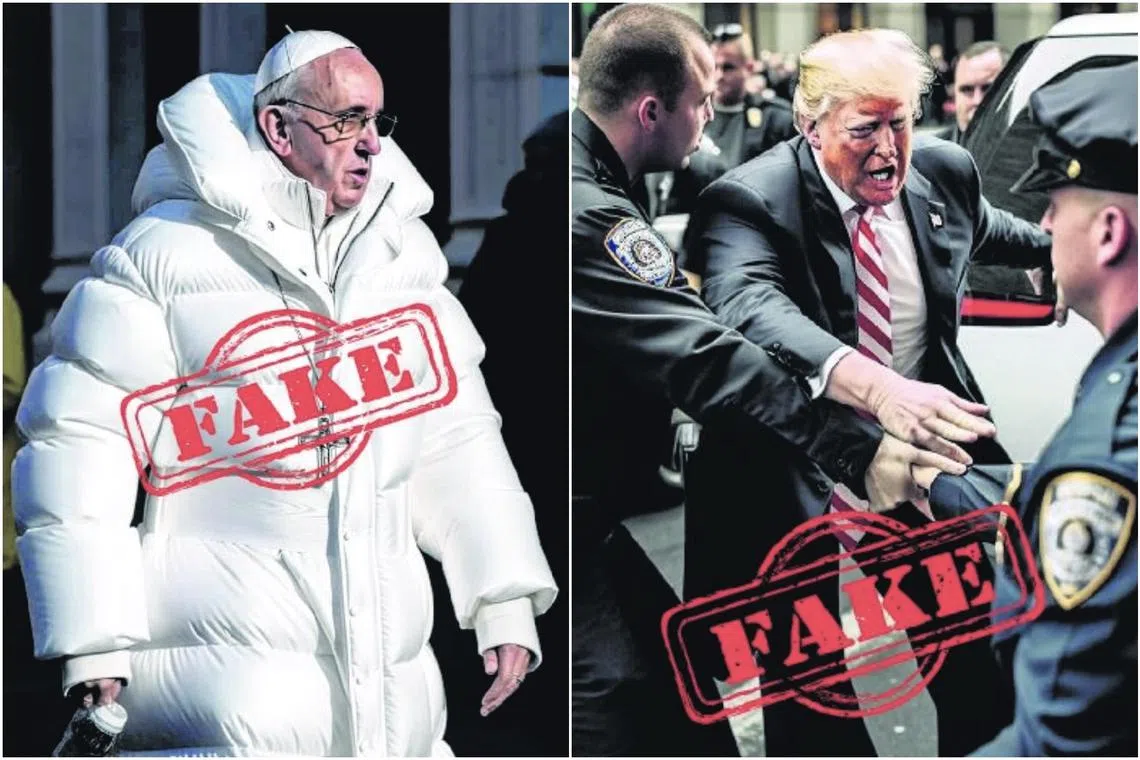For subscribers
Are we ready for a post-trust world?
With generative AI becoming freely accessible, brace yourself for deepfake overload. Time to marshal truth tools, and your own critical thinking.
Sign up now: Get ST's newsletters delivered to your inbox

Fake images of Pope Francis in a puffer jacket and former US president Donald Trump's arrest are examples of generative AI's ability to produce highly realistic photos.
PHOTOS: MIDJOURNEY/REDDIT, WEIRD AI CREATIONS/TWITTER
Follow topic:
A video of Ukrainian President Volodymyr Zelensky telling his soldiers to surrender Pope Francis in a white designer puffer coat?
Yet all three were fake, all three went viral and there are heaps more where they came from. Generative artificial intelligence (AI) is capable of fabricating endless hyper-realistic images and videos, enhanced with compelling audio


